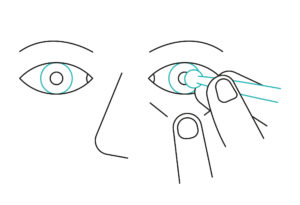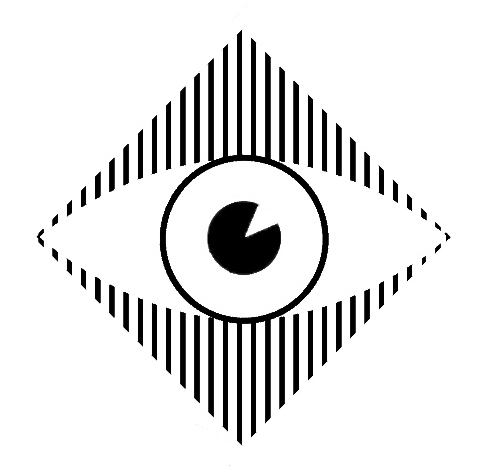Information and advice

Our prostheses
Advantages of glass eye prostheses
Wearing a glass ocular prosthesis is comfortable and easy to care for. It is quick to make, about an hour and a half, so you can leave with your prosthesis at the end of the consultation.
We use a special glass containing Cryolite (Na3AlF6) to make our prostheses. This glass has been used for the manufacture of ocular prostheses for a 150 years and its properties remain incomparable. Chemically inert, it eliminates the risk of allergies. Its flame-polished surface is dense and perfectly smooth, which allows the prosthesis to be wetted by the tear fluid. The eyelids movement is optimal on such a smooth surface; the risk of irritation is almost nil and the deposits (tear fluid) are easily removed with water.
Of course, a glass ocular prosthesis is fragile. It must be handled with care when cleaning (see “care“). However, the prosthesis cannot break in the eye socket: it is well protected by the bone structure of the skull; the eyebrow arch, the bone under the eye (malar bone) and the nose. This means you can continue your sports activities – including boxing and diving – with complete peace of mind!
Glass ocular prostheses meet aesthetic and medical requirements.
Consultation
What is the procedure for a consultation with an ocularist?
When to make an appointment?
After an eye operation, you will have to wait between 10 days and 1 month before you can wear an eye prosthesis. Your ophthalmologist will refer you to us at the appropriate time.
When your prosthesis is worn out, it is also time to make an appointment with your ocularist. Renewal is recommended every year.
If you are unable to come to our practice in Perly near Geneva, you can consult our travel calendar for the following cities: Lausanne, Fribourg, Sion and Landeyeux. It is also possible to send us your old prosthesis by post so that we can reproduce it, as long as it is still well adapted in shape and colour.
Procedure
At the beginning of the session, we evaluate the cavity, then test various prosthesis models and establish the suitable shape for the development of your prosthesis.
The custom design (colour, shape) and manufacture of your blown glass ocular prosthesis takes about an hour and a half, we can do necessary touch-ups there and then. At the end of your session you can leave with your prosthesis fitted.
Coverage of costs
Our eye prostheses are covered by IV/AI, SUVA, UVG or your basic health insurance (KVG/LAMal). The renewal of a glass eye prosthesis is granted every year, or every two years depending on the case.
Care
How to take care of your prosthesis and when to replace it?
Cleaning
How often you clean your prosthesis is an individual matter. We recommend taking it out once a month for a thorough cleaning.
To avoid breaking of your prosthesis, it is imperative that you never remove it above a tiled floor or washbasin, even if you have placed a cloth over it beforehand (risk of bouncing). We recommend that you clean the prosthesis on your bed in a container filled with water.
Running water at room temperature is sufficient to clean your prosthesis. You can also use a saline solution. Rub the prosthesis lightly between your fingers. The protein deposits from the tear fluid can be gently scraped off with your fingernail. If this is not enough, leave the prosthesis to soak for a few minutes in fruit vinegar, then gently scrape with a nail and finally rinse thoroughly with clear water.
Daily use
In case of dryness of your prosthesis, you can use saline solution. In any case, wearing an ocular prosthesis does not prevent you from using the drops recommended by your ophthalmologist.
If you need to rub your eyes, do so only in the direction of the nose. Rubbing in the opposite direction (especially the lower eyelid) may cause the prosthesis to come out.
Removal and insertion
On the inside of our prostheses, a black dot indicates the side that is positioned towards the nose.
On single-shell prostheses, this black dot is located on the top.
Removing the prosthesis
with a suction cup:
 1. Spread the eyelids to clear the surface of the prosthesis and the eyelashes. Pinch the suction cup and apply it to the iris (moisten with saline if necessary)
1. Spread the eyelids to clear the surface of the prosthesis and the eyelashes. Pinch the suction cup and apply it to the iris (moisten with saline if necessary) 2. Tilt the prosthesis upwards and then pull it forward, so that the lower part of the prosthesis comes out first.
2. Tilt the prosthesis upwards and then pull it forward, so that the lower part of the prosthesis comes out first.If you need a new suction cup, please contact us!
You will not find one in pharmacies or at your ophthalmologist.
without suction cup:
 1. Look up and place an index finger on the prosthesis. Place the other index finger on the lower eyelid
1. Look up and place an index finger on the prosthesis. Place the other index finger on the lower eyelid
2. Slide the lower eyelid behind the prosthesis and pull the lower part of the prosthesis out.
Put in the prosthesis
 1. Lift the upper eyelid and insert the upper part of the prosthesis, preferably using your fingers (not the suction cup),
1. Lift the upper eyelid and insert the upper part of the prosthesis, preferably using your fingers (not the suction cup), 2. Push the prosthesis upwards under the upper eyelid,
2. Push the prosthesis upwards under the upper eyelid, 3. While holding the prosthesis, pull the lower eyelid slightly downwards and then place the lower part of the prosthesis on it.
3. While holding the prosthesis, pull the lower eyelid slightly downwards and then place the lower part of the prosthesis on it.What to do if the prosthesis has moved?
Sometimes a prosthesis “turns”, for example when rubbing the eyelids. As a rule, the nasal part usually turns downwards and ends up on the outer side of the cavity. To put it back in place, simply turn the prosthesis in the other direction with your suction cup.
Replacing your prosthesis
Despite regular cleaning, the surface of a prosthesis wears over time, regardless of the material used to make it. This is due to tear fluid, dust and external atmospheric influences. The prosthesis then loses its shine and may become a source of irritation. It is therefore essential to replace it in good time.
Renewal is recommended every year. This allows the shape of the prosthesis to be adapted to any changes in the orbital cavity.
The correction of a new prosthesis is only possible if it has not been worn for more than one day. Complaints that are not made within a short period of time can no longer be taken into consideration and we will be obliged to charge you for the manufacture of another prosthesis.
When you visit the ophthalmologist, ask him or her to remove your prosthesis in order to check your eye socket. This operation is highly recommended!
In case of breakage
If your prosthesis should break, it is very important that you collect all the pieces and bring them to your appointment. This will help us to restore your prosthesis to its original shape.
If you are unable to come to our office, you can send us your old prosthesis by post. We can copy it, as long as it still fits well in terms of shape and colour.
It is not always possible to repair a damaged prosthesis.
We strongly advise that you to keep a spare prosthesis and always carry it with you, especially when you are away or travelling. Unfortunately, it is not always possible for us to produce a new prosthesis within a very short period of time.
Links
Medical Tariff Commission LAA / UVG
Tariff agreement for eye prostheses, valid from 1 January 2019.
To websiteSwiss National Association of and for the Blind
Making a good quality of life possible despite sight loss or sight and hearing loss
To websiteRegards Neufs
Access to film culture for the visually or hearing impaired. A sensitive approach to cinema.
To websiteTrajectoires
Trajectoires is a Geneva-based association that provides ethical guidance towards psychotherapy.
To website
